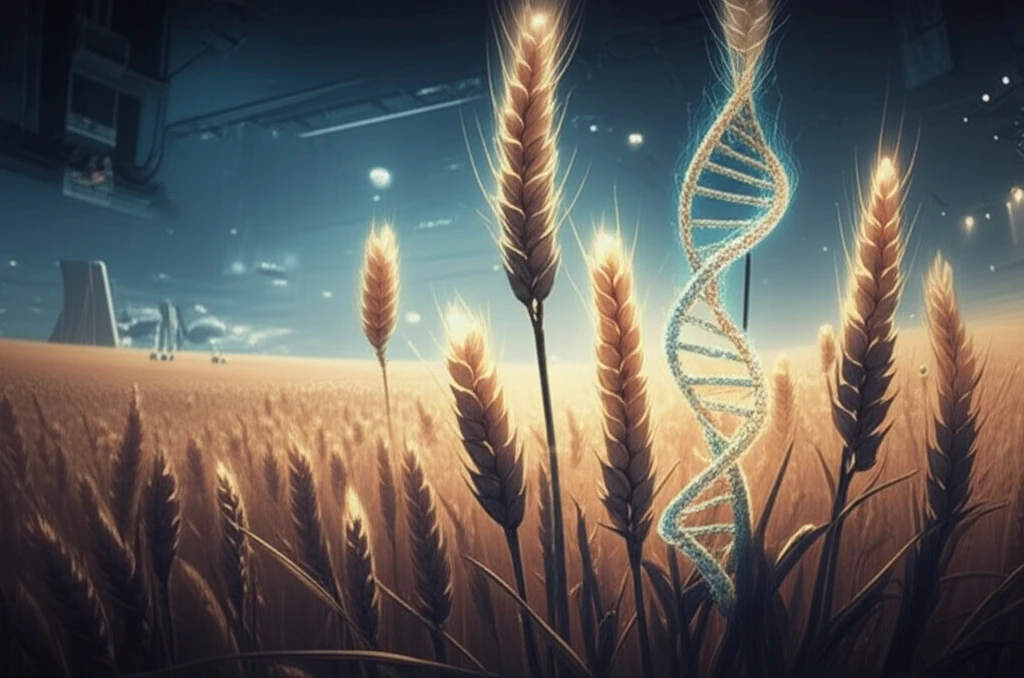
Sowing the Seeds of Success: Unlocking Wheat's Genetic Potential for Higher Yields
"Genetic mapping reveals key insights for boosting biomass, grain, and straw yield in wheat breeding programs."
Wheat is a global staple, and increasing its production is crucial to meet the demands of a growing population. By 2020, wheat production needed to increase by 40% to meet requirements. Traditional breeding methods are being augmented by exploring the genetic architecture of key traits like biomass yield (BY), grain yield (GY), and straw yield (SY). Understanding the genetic factors that control these traits can lead to more efficient and targeted breeding strategies.
While grain yield has been a primary focus, biomass and straw yield are also gaining importance. Biomass contributes to the overall economic value of wheat, while straw is recognized as a valuable source of renewable energy. To truly maximize wheat's potential, breeders need a comprehensive understanding of the genes influencing all three traits: BY, GY, and SY.
This article delves into a study that used a doubled haploid (DH) wheat population to map quantitative trait loci (QTL) – regions of DNA associated with specific traits – for biomass yield, grain yield, and straw yield. By identifying these key genetic markers, researchers hope to provide wheat breeders with the tools to develop varieties with significantly improved yields and optimized resource allocation.
Deciphering Wheat's Genetic Code: Key QTLs for Yield Traits

The study pinpointed 13 QTLs with significant additive effects on biomass, grain, and straw yield. Additive effects refer to the direct contribution of a gene to a particular trait. Six of these QTLs also exhibited epistatic effects, meaning they interacted with other genes to influence the trait. Furthermore, 11 significant additive x additive interactions were found, demonstrating the complex interplay of genes in determining overall yield.
- Biomass Yield (BY): Four QTLs located on chromosomes 3A, 4B, 4D, and 5A2 were identified, explaining 2.57% to 10.87% of the phenotypic variation. This means that these genetic regions have a measurable impact on the total biomass produced by the wheat plant.
- Grain Yield (GY): Four QTLs on chromosomes 2D, 4B, 4D, and 7B2 accounted for 22.30% of the phenotypic variation. The QTL on 4D (QGy4D) had the largest positive impact, suggesting it's a prime target for breeders seeking to improve grain production.
- Straw Yield (SY): Five regions on chromosomes 2B, 3A, 4B, 4D, and 5A2 influenced straw yield, explaining 2.10% to 9.76% of the phenotypic variation. The QTL on 4D (QSy4D) had the most significant effect, indicating its importance in determining straw production.
The Future of Wheat Breeding: Marker-Assisted Selection
The identification of these key QTLs opens the door for marker-assisted selection (MAS) in wheat breeding programs. MAS involves using DNA markers linked to desirable genes to select for those genes in early generations of breeding, speeding up the process of developing improved varieties. By focusing on QTLs with significant additive effects and stable performance across environments, breeders can make more efficient progress towards higher yields.
Furthermore, understanding the epistatic interactions between QTLs allows for more sophisticated breeding strategies. Rather than simply selecting for individual genes, breeders can aim to combine specific combinations of genes that work together synergistically to boost yield. This approach can lead to even greater gains in wheat production.
As climate change and increasing global population place greater demands on agriculture, unlocking the genetic potential of crops like wheat is essential. By applying the knowledge gained from studies like this, breeders can develop new wheat varieties that are more productive, resilient, and sustainable, ensuring food security for future generations.
